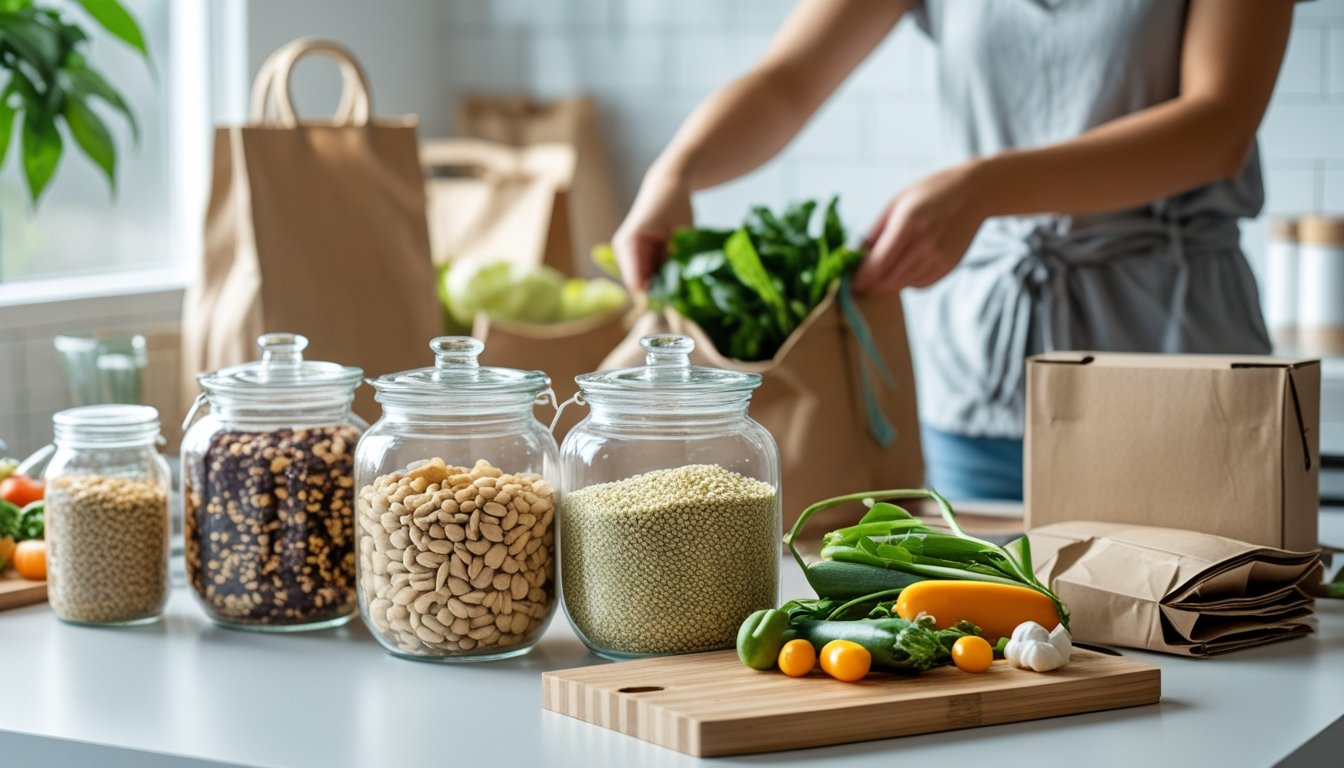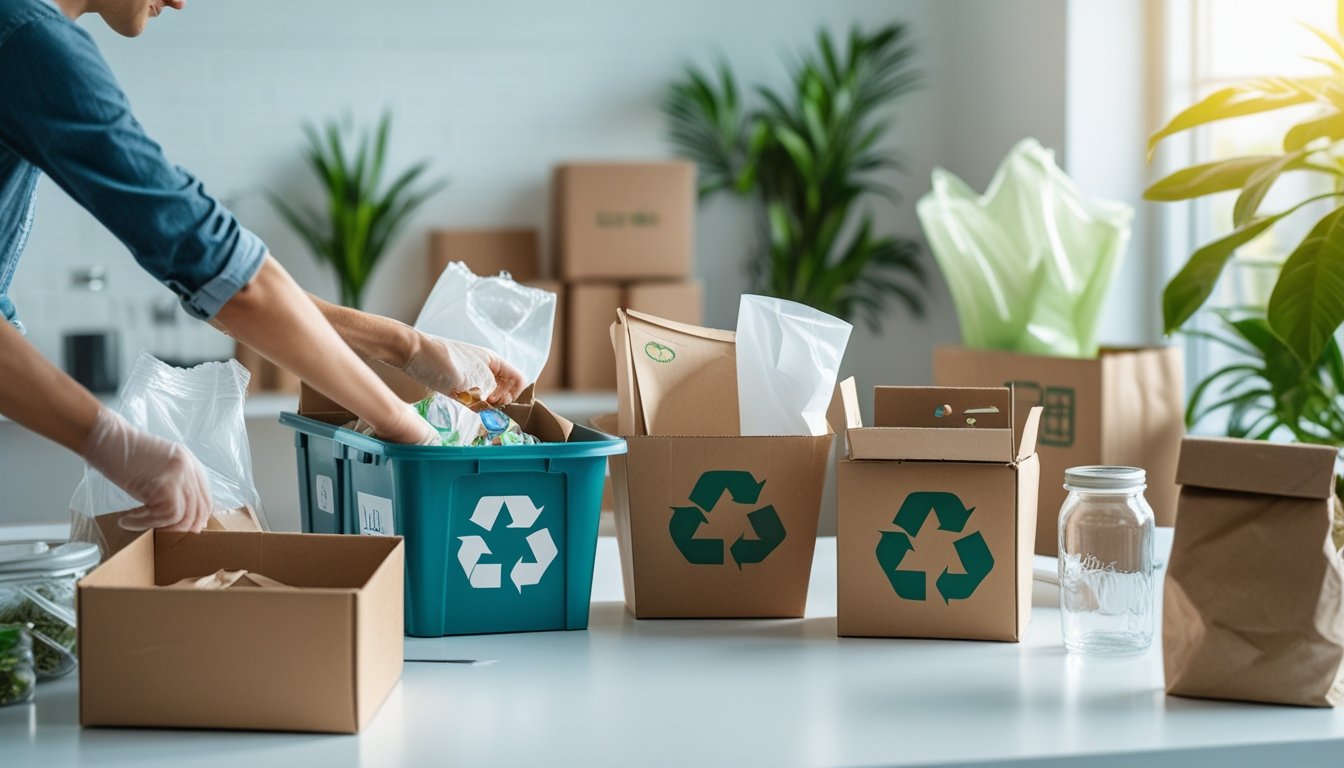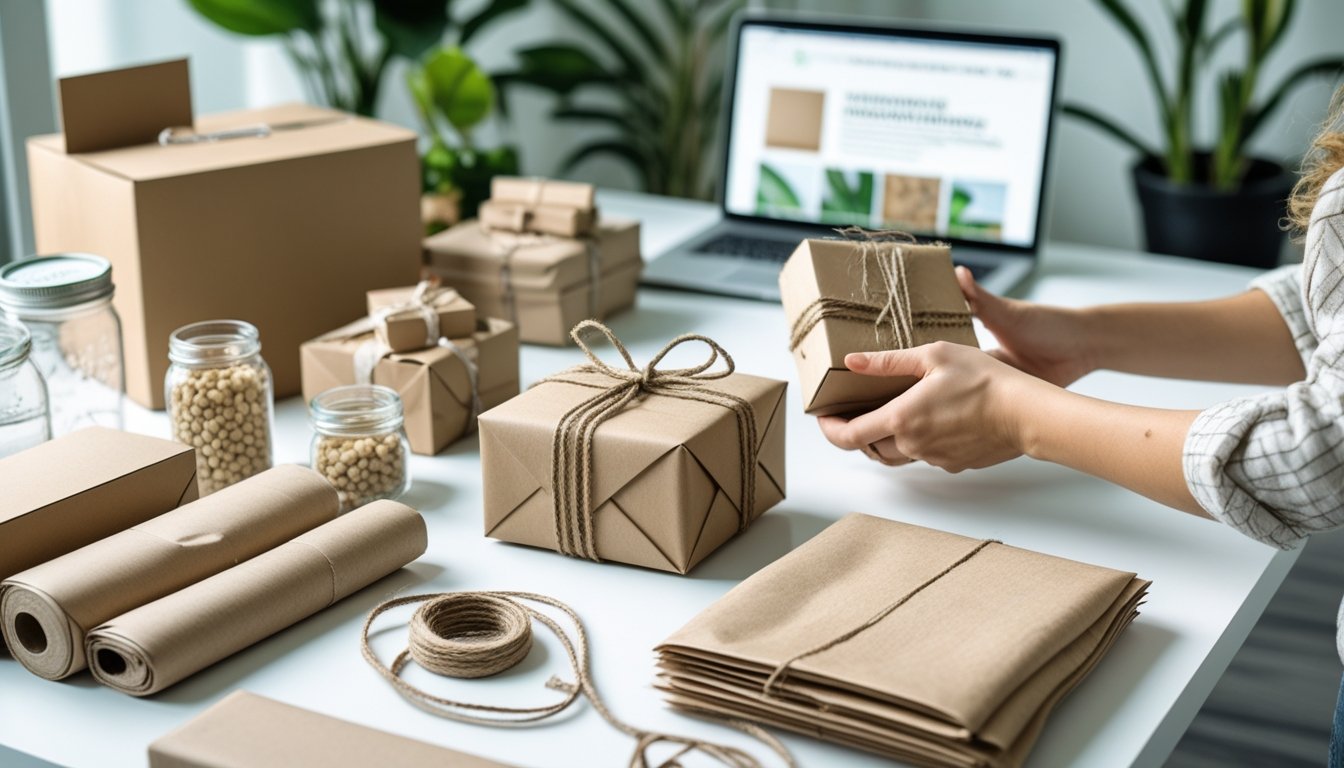Late updated: 27 Jul 2025 11:07
Written by: Sarah Hollister
Eco-Friendly Ways To Reduce Packaging Waste: Simple Strategies for a Sustainable Future
Reducing packaging waste is more important now than ever as we face growing environmental challenges. As companies and consumers alike seek eco-friendly solutions, it's vital for us to explore innovative ways to cut down on waste. From using recyclable materials to implementing smarter design processes, there are myriad strategies available. Adopting sustainable packaging not only helps the environment but can also lower costs and meet increasing consumer demand for green practices.

By exploring new methods, such as biodegradable bioplastics and recyclable padded mailers, we can significantly minimise waste. The use of these materials not only reduces the burden on landfills but also supports a circular economy, where resources are reused and renewed. Our commitment to these practices is crucial for creating a greener planet.
As we delve into this topic, we discover that sustainable packaging holds the potential to transform industries. This is not just about reducing current waste. It's about reimagining the way we package products to align with a more sustainable future. Together, let's explore these eco-friendly options and their positive impact.
Key Takeaways
- Eco-friendly packaging reduces waste and lowers costs.
- Innovative materials can cut the burden on landfills.
- Sustainable packaging transforms industries towards greener practices.
Fundamental Eco-Friendly Strategies to Reduce Packaging Waste

Reducing packaging waste is essential for lowering the environmental impact and achieving sustainability. We will explore strategic design choices, the use of sustainable materials, and recyclability to minimise waste effectively.
Minimising Packaging Through Design
Optimal packaging design can significantly cut down waste. Minimalist packaging reduces excess material usage, which not only conserves resources but also diminishes the carbon footprint. By focusing on essential packaging features, we can eliminate unnecessary layers and materials. Custom-fit designs ensure products are packaged securely without wasteful space. Innovative methods, like collapsible containers, offer flexible, eco-friendly solutions. Embracing these strategies allows us to cater to both functionality and sustainability, thus enhancing green packaging solutions.
Adoption of Sustainable Packaging Materials
Sustainable packaging materials are key in creating eco-friendly packaging solutions. Biodegradable materials, such as plant-based plastics and recycled paper, provide alternatives to conventional packaging. These materials break down more easily, reducing landfill contributions. Furthermore, using materials with a lower environmental impact helps decrease the carbon footprint. Investing in sustainable options not only supports environmental goals but also aligns with consumer demand for greener products. By choosing materials that prioritise sustainability, businesses can make significant strides in sustainable packaging solutions, advancing their environmental commitments.
Choosing Packaging with High Recyclability
Selecting packaging with high recyclability ensures materials can be reused rather than discarded. Materials like aluminium, certain plastics, and glass can be recycled multiple times, promoting a circular economy. Clear labelling and consumer education about recycling practices further enhance recyclability. By prioritising recyclable options, we support green packaging solutions and sustainable practices. Additionally, choosing recycled materials reduces resource consumption and greenhouse gas emissions. These decisions help reinforce efforts towards reducing the environmental impact of packaging, driving progress in eco-friendly practices.
Innovative Materials and Solutions for Sustainable Packaging
Exploring sustainable packaging solutions is essential in reducing our ecological impact. By embracing biodegradable, compostable, and plant-based materials, we can make significant strides in eco-friendly practices. These innovations not only reduce waste but also promote a circular economy, ensuring that resources are reused and recycled effectively.
Biodegradable and Compostable Materials
Biodegradable materials are designed to break down naturally, usually within a year. They're made from natural sources, offering an eco-friendly alternative to conventional packaging. Compostable materials go a step further by breaking down into non-toxic components that enrich the soil. Products made with polylactic acid (PLA), derived from corn starch, underscore the promise of these materials. Our approach to incorporating these materials entails ensuring they can decompose efficiently both in industrial composting facilities and home compost heaps. This dual capability distinguishes compostable packaging and enhances its contribution to waste reduction.
Utilising Recycled Materials and Recycled Paper
Recycling plays a crucial role in sustainable packaging. By reusing materials, we can significantly diminish the demand for new resources. Recycled materials, particularly recycled paper, are increasingly prevalent in creating packaging solutions. These materials not only reduce resource consumption but also cut down on energy use in manufacturing processes. We're committed to integrating as much recycled content into our packaging as possible, with recycled paper often being a primary choice due to its versatility. Ensuring that the recycling loop is continuous, with materials being reused multiple times, remains our priority.
Plant-Based Plastics and Bioplastics
Plant-based plastics and bioplastics are transforming the packaging landscape. Derived from renewable sources like corn, sugarcane, and cellulose, these materials provide a sustainable alternative to traditional plastics. Not only do they lessen greenhouse gas emissions during production, but they also offer the potential for compostability. Our focus on these materials involves improving processing techniques to enhance their viability across various applications. Additionally, as technology advances, we anticipate increased market penetration of bioplastics, facilitating broader usage and driving down costs.
Bagasse and Alternative Natural Fibres
Bagasse, a by-product of sugarcane processing, represents a noteworthy innovation in sustainable materials. This fibrous residue is harnessed to create durable, compostable packaging that effectively replaces materials like polystyrene. Utilising bagasse aligns with our goals to efficiently use agricultural residues, decreasing waste and fostering a circular resource economy. Furthermore, other natural fibres such as hemp, bamboo, and jute are being explored for their potential in sustainable packaging. These materials provide biodegradable options that underscore our commitment to reducing environmental impact while meeting consumer needs for eco-friendly solutions.
Frequently Asked Questions

In this section, we explore practical aspects of eco-friendly packaging, addressing common queries from businesses and consumers. We look at sustainable options and industry initiatives, plus legislative measures in Canada that support a greener approach.
What are some sustainable packaging alternatives for small businesses?
Small businesses can utilise options such as recycled paper, biodegradable plastics, and plant-based materials for packaging. These alternatives not only reduce environmental impact but also enhance brand appeal. Small enterprises should research suppliers offering eco-friendly products that suit their specific needs, balancing sustainability with cost.
Which materials are considered the most eco-friendly for food packaging?
Materials like bioplastics, recycled paperboard, and glass are excellent for eco-friendly food packaging. These materials decompose more readily or can be part of a closed-loop recycling system, lessening the strain on landfills. Choosing these options helps maintain product safety while being kind to the environment.
How can companies transition to eco-friendly packaging without significantly increasing costs?
To transition to sustainable packaging, businesses can start by evaluating current packaging processes and looking for efficiencies. Bulk purchasing of eco-friendly materials might reduce overall expenses. Collaborating with suppliers on custom solutions and gradually phasing in changes can also keep costs manageable.
What examples of successful sustainable packaging initiatives exist in various industries?
Industries like food and beverage, cosmetics, and retail have seen numerous successful initiatives. Brands have adopted minimalist design principles, reusable containers, and materials that double as product parts, like edible wrappers. Such initiatives demonstrate commitment to sustainability and can significantly decrease waste.
In what ways can consumers influence the reduction of packaging waste?
Consumers play a crucial role by opting for products with minimal or recyclable packaging. Supporting brands prioritising sustainability creates market demand for eco-friendly options. Engaging in responsible disposal and recycling practices further contributes to waste reduction, encouraging broader change.
What legislative measures are being taken to promote eco-friendly packaging in Canada?
Canada is implementing policies that mandate recycling and the use of sustainable materials. Regulations aim to phase out single-use plastics and encourage eco-conscious designs. These measures support a circular economy model, striving to minimise environmental impact while fostering innovation in packaging solutions.
